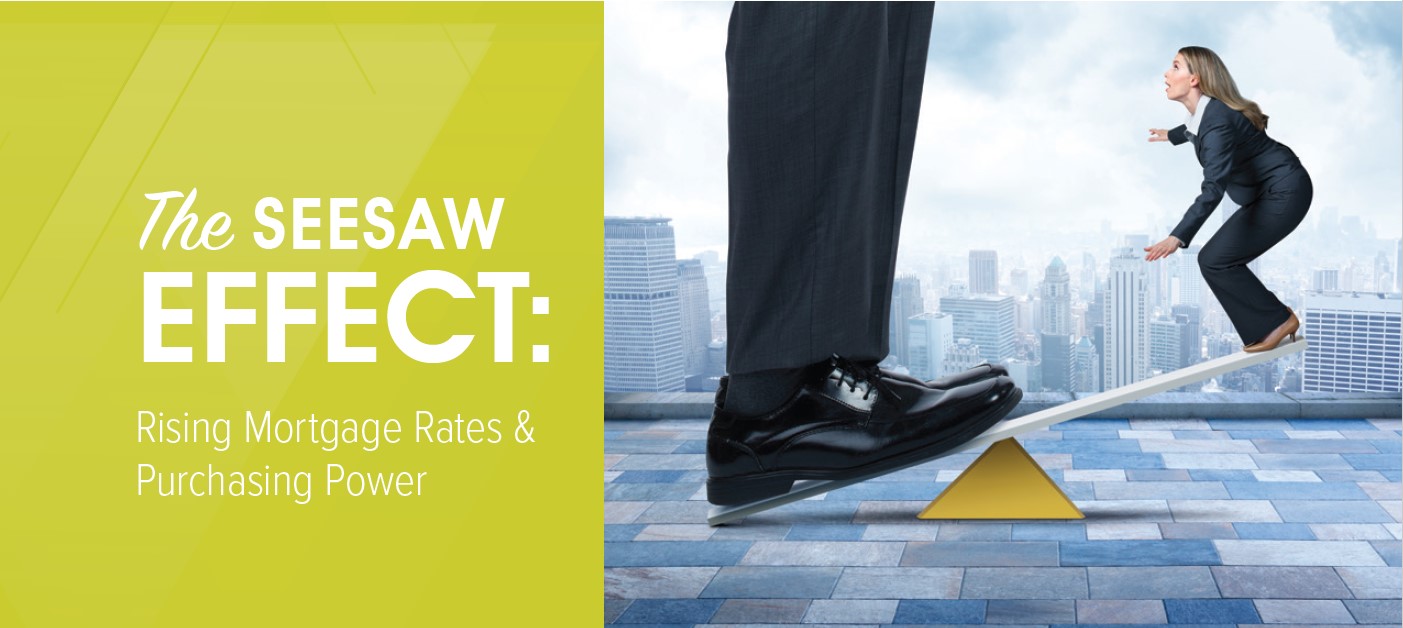Investment Outlook: First Quarter 2022 - The Seesaw Effect

Interest rates have been in the spotlight all year, with changes having all sorts of ripple effects on the economy from Wall Street to Main Street. For consumers, the most direct and immediate impact of changing interest rates is reflected in mortgages. According to JP Morgan, mortgage debt makes up 65% of all consumer debt, with student debt second making up 10% and auto loans third, comprising 7% of overall consumer debt.
At the start of 2022, a lender on a 30-year fixed-rate mortgage would charge an interest rate of about 3.0%. The average rate on this type of loan has been 3.75% over the last 10 years. The average rate on the same loan taken back over the last 50 years is a whopping 7.75%! While still historically low, the increase from early 2022 to now gives reason for pause. According to CNBC, the same loan from early 2022 would cost 4.72% on March 22, 2022. It is this sharp, quick increase in the rate consumers pay when buying a house that warrants exploration.
The good news is that most Americans that have used mortgage debt to buy a house have a fixed-rate mortgage. This means that the interest rate paid on the loan is fixed and will not change over the life of the loan, or in this environment, move higher. On the other hand, people looking to purchase a home for the first time, or sell a home and purchase another are in a bit of a pickle. As rates rise, the monthly cost of a dollar borrowed goes up. Each additional dollar spent on interest is a dollar that cannot be spent elsewhere.
Consumer debt as a percentage of disposable income (debt service ratio) is near an all-time low, thanks in part to rock bottom mortgage rates. According to JP Morgan, the current household debt service ratio is 9.0% compared to a historical average of 11%. When consumers have more money to spend, they typically spend it. In a consumer-driven economy such as our own, this is quite positive for economic growth. As consumers pay more to service their debt, it could weigh on economic growth.
For some perspective on what a 1% increase in the 30-year fixed-rate mortgage costs a consumer, see the example below.
Another variable when considering housing costs and the spending ability of the consumer after putting a roof overhead is the cost of the house itself. If, as mortgage rates climb, the housing market softens, the consumer might not end up spending more on a monthly mortgage payment. Rising rates, which in turn push down the value of housing, is a simple example of how increasing rates can help to reduce inflation.
Historically, housing prices move slower than central banks change interest rates. This leaves new home buyers in today’s market at a disadvantage. New buyers will allocate more of their disposable income to covering the cost of interest than they would have just a few months ago. While this reallocation of some disposable income is a negative for the consumer, the good news is that many consumers have locked in extremely low interest and don’t plan on making a change any time soon. Consumers in the United States are financially healthy and seem eager to spend, which is typically a recipe for healthy economic growth.
